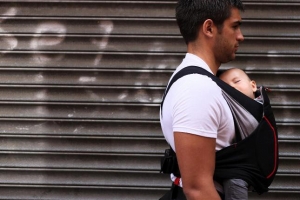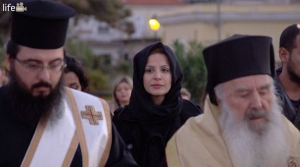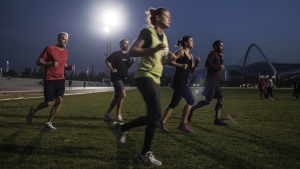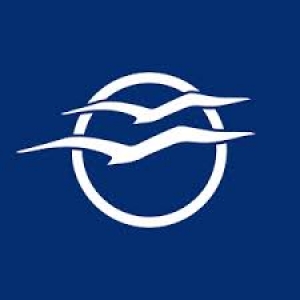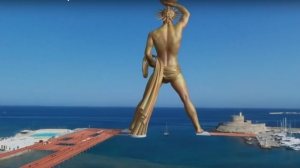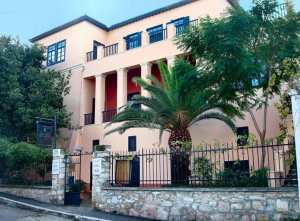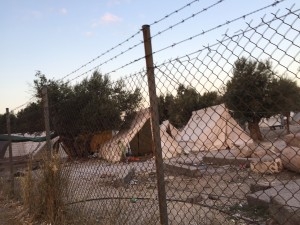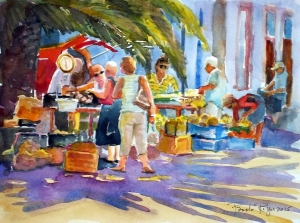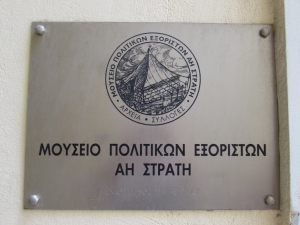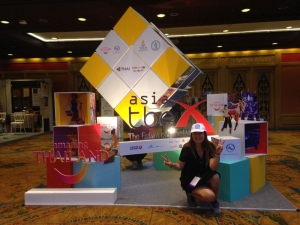ABOUT US
XpatAthens
Wednesday, 11 November 2015 07:00
6 Month Child-Care Leave Provided To Fathers
Until recently only woman were able to apply and granted the 6-month child-care leave provided by OAED (Greece’s Employment Agency).
According to a bill submitted to parliament in October, men will now also be granted child-care leave. It will be granted, if desired, by the insured individual, after the 4-month pregnancy and maternity leave of the mother.
The monthly amount paid to the beneficiary is up to 586 Euros and is paid by OAED. Note, the child-care leave can be taken by either the mother or father, but not both individuals.
Originally posted in Greek on NewMoney
Published in
Local News
Tagged under
Monday, 09 November 2015 12:09
Remembering The Souls Lost In The Aegean
Religion typically divides us as people, but in Lesbos last week at the memorial service for the souls lost in the Aegean, Muslims and Christians prayed together. Each prayed based on their beliefs and together they stood in the face of reality's pain.
As described by the photographer, Konstantinos Vougioukas:
'A mother stands as a statue. One can feel how historical such moments are when you see Christians and Muslims praying all together for the victims that drowned in the Aegean Sea... Because human life does not recognize religion.'
Originally posted in Greek on LIFO. Photo by Konstantinos Vougioukas.
In our research about the photographer Konstantinos Vougioukas, we came across these powerful videos and wanted to also share them with you. Simply incredible.
1) https://www.facebook.com/lifedocGreece/videos/946716745403452/?pnref=story
2) https://www.youtube.com/watch?v=fRIGEyOPYBc
To learn about how you can help in the refugee crisis, click HERE.
Published in
Videos
Tagged under
Saturday, 07 November 2015 09:22
The Greek Running Boom
In 2005, some 800 Greeks took part in the Athens Classic Marathon, while this year more than 9,000 are said to have set off from starting line on Sunday November 8. A decade ago, Greece held no more than 50 events a year for amateur runners, but now, including mountain races, these surpass 300.
Running in Greece has become so popular in recent years that even professionals have been caught unaware. It has given rise to new professions, offset the losses of others and gradually changed the mentality of many in regard to sport.
Amateur runner Marios Kritikos tells Kathimerini that he began running on the encouragement of friends, and in a bid to shed a bit of weight. Today, at the age of 37, he works as a software engineer at a mutinational firm and has completed eight marathons in Greece and abroad, two mountain races on Olympus and one 12-hour race in Elefsina. Not everyone could understand his passion at first. “The first summer I went to my wife’s village and ran in tights, the locals laughed at me,” he says. “Last year and this year, though, I saw a lot of people either running or walking in the same areas. We’re growing accustomed to the sight. It does not raise eyebrows as it once did.”
The growing popularity of running is particularly well illustrated in the numbers for the Athens Marathon, which is organized by SEGAS, Greece’s athletics federation. Enrollments this year (including the 5k and 10k races that are held on the same day) came to more than 40,000, from just 7,300 in 2007. In the period between 2011 and 2012, foreign travel agents reduced their reservations for runners from abroad because of the mass protests in Athens but this loss was offset by a spike in the number of Greeks who signed up, breaking all previous records.
An athletics event of this size is particularly lucrative. This year organizers estimated that, thanks to the arrival of runners and their friends and families from abroad, around 10 million euros will be spent at hotels, restaurants, archaeological sites and retail stores over the five-day period.
How can Greeks’ sudden interest in running be explained? “I think the crisis played a big role. Running is a form of stress relief and low-maintenance. All you have to do is put on a pair of shorts and running shoes and go outside,” says physical therapist Giorgos Psaroyiannis, a veteran runner himself. Last year he treated more than 1,000 runners, compared to a decade ago when he barely had 200.
ΟHe has noticed that most people start running in their 30s and while it starts as a hobby, many overdo it or make technical mistakes, often leading to injury. “I tell them that they need to have continuity. The aim is to run for as many years as we can,” says Psaroyiannis.
One recent afternoon at the Olympic Stadium, dozens of amateur runners pushed the extra few kilometers under the floodlights as they counted down the last two weeks to the Marathon. Polias watched them from a corner, stopwatch in hand.
“I want to believe that this is not a passing trend,” he says. “In running, nothing comes for free. You have to keep trying until you reach your goal. People who put running in their lives and are committed keep doing it because it is an unbelievable source of joy and well-being.”
To read this article in full, please visit eKathimerini
Published in
People
Tagged under
Monday, 09 November 2015 07:00
Aegean Connects Athens With 14 New Global Destinations & Brings 12.5 Million Jobs
Aegean Airlines has announced the introduction of 14 new destinations from Athens, 111 international routes to 45 countries and investments in four new Airbus A320 carriers.
During a presentation of its 2016 business plan, the Greek carrier said that its primary aim is to boost Athens as a hub by intensifying the number of direct connections to new markets, adding 14 international destinations (Dublin, Nice, Lille, Naples, Bari, Luxembourg, Amsterdam, Lisbon, Palma de Mallorca, Ljubljana, Jeddah, Krakow, Vilnius, Split), and six new countries: Ireland, Luxembourg, Portugal, the Netherlands, Slovenia and Lithuania.
It also said that it plans to increase the number of destinations and frequencies in sector-significant markets such as France, Italy, Spain and Saudi Arabia.
In total, the company will link the Greek capital with 101 destinations – 71 foreign, 30 domestic – opening up in the meantime 12.5 million jobs, an additional 1 million compared to 2015.
To read more, please visit: Greek Travel Pages
Published in
Local News
Tagged under
Monday, 09 November 2015 07:00
‘Colossus Of Rhodes Project’ To Revive One Of Ancient World’s 7 Wonders
Young professionals from Greece, Spain, Italy and the United Kingdom have been inspired to take up the ambitious “Colossus of Rhodes Project,” aiming to revive one of the Seven Wonders of the Ancient World.
The Colossus of Rhodes was a statue of the Greek titan-god of the sun Helios, erected on the Greek island of Rhodes by Chares of Lindos, in 280 BC, to celebrate Rhodes’ victory over the ruler of Cyprus, Antigonus I Monophthalmus. It was one of the tallest statues of the ancient world standing over 30 meters (around 98 feet) high.
The bronze structure was destructed after Rhodes was hit by the 226 BC earthquake, however, it was not until 654 AD that Saracens ransacked the island and sold the statue’s relics.
Over 2200 years after its collapse, architect Ari A. Palla, archaeologist Christos Giannas and public relations-marketing professional Dionisis Mpotsas from Greece, civil engineer Enrique Fernández Menendez and economist Matilda Palla from Spain, architect Ombretta Iannone from Italy, as well as civil engineer Eral Dupi from the United Kingdom, recommended its restoration, as part of a European initiative the financing of which is addressed to the general public.
To read more, please visit: Greek Reporter
Published in
Greece In The News
Tagged under
Thursday, 30 July 2020 07:00
The 10 Oldest Houses In Athens
The oldest houses in the city of Athens date back to the 17th century and tell us wonderful stories with great protagonists.
Do you know when the oldest house of modern Athens was built and who lived there? Have you heard about the person who designed half of Athens' neoclassical buildings? Do you know where he lived? The answers that follow may surprise you!
Do you know when the oldest house of modern Athens was built and who lived there? Have you heard about the person who designed half of Athens' neoclassical buildings? Do you know where he lived? The answers that follow may surprise you!
1. The Benizelos Mansion
The oldest surviving house of Athens is located in Plaka, 96 Adrianou Street, and belonged to the aristocratic family of the Athenian archon Angelos Benizelos - whose daughter would later become known as St. Filothei. The house dates back to the 16th century, but most of what we see today is from the late 17th and early 18th century. A characteristic example of it’s Ottoman architecture, with loggia, patio and well, the house has been restored in recent years and has become a museum.
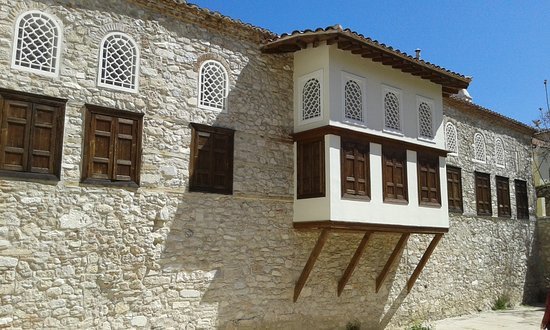

2. The Logothetis Mansion
Located in Plaka at 14B Areos Street and built in the 17th century, the Logothetis mansion only has the gate, the fountain and a small section of the yard in tact. It was the villa of the British consul Logothetis and his family that hosted Thomas Elgin when he visited Athens. Before the Parthenon Sculptures where sent to Britain, they spent their last nights in this mansion.
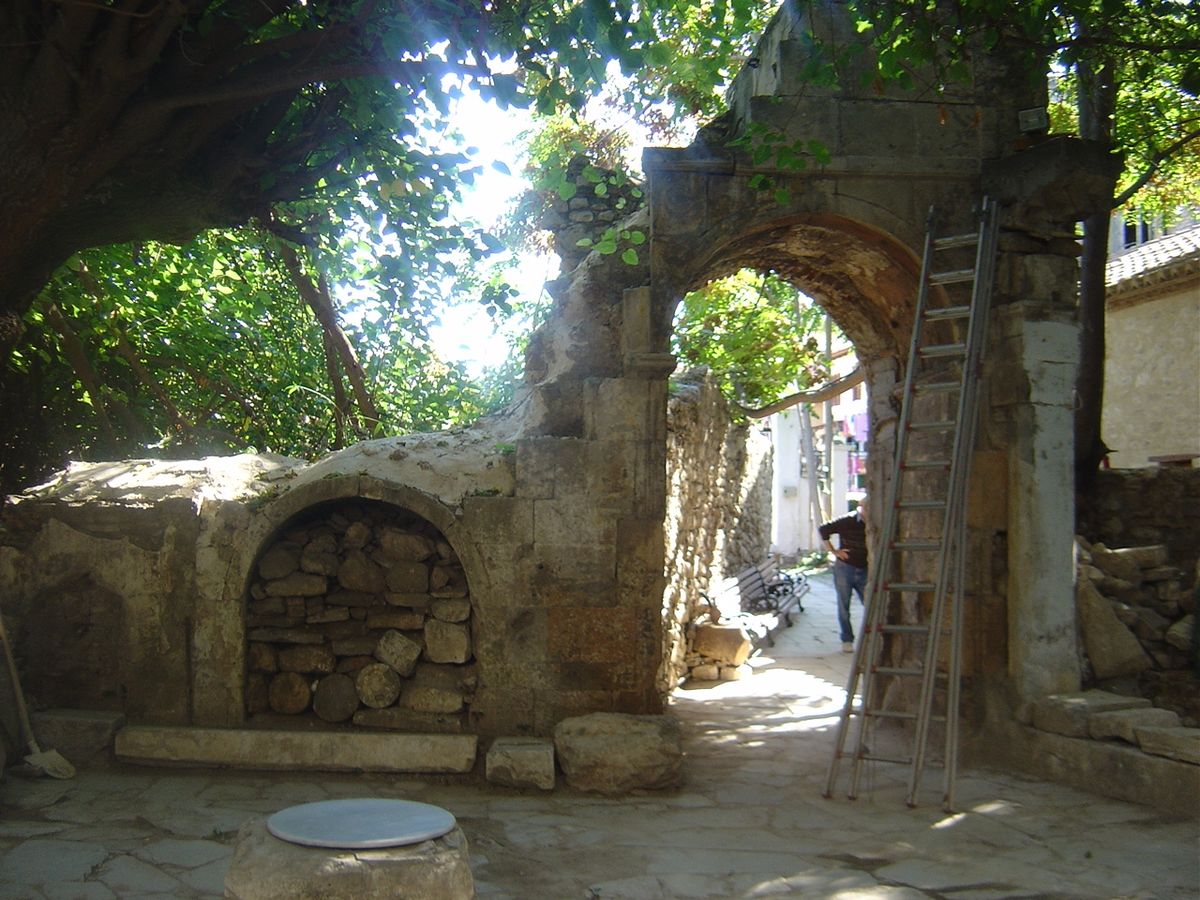

3. The George Church Tower
On the corner of School Street and Epicharmou, this three-storey tower with fortification that distinguishes it from all the buildings of Plaka is one of the few Ottoman buildings that survived to this day. Built in the 18th century, it was used as a post by the Ottomans before being sold to a Scottish historian and philhellene George Finley in 1835. Here stayed Finley’s comrade, Richard Church, Irish General, which gave the building the name "Tower of Church". With another name, 'House Dialisma,' the historic house became famous again in 1928, as a matter of the famous Tsarouchis painting.
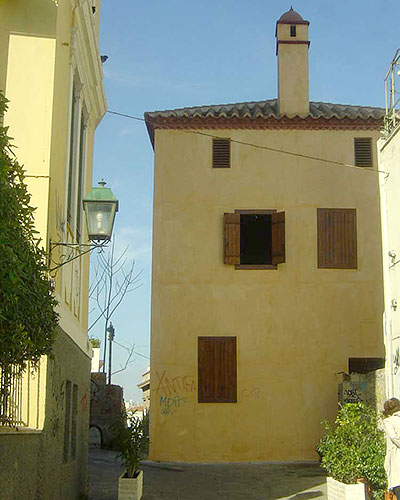

4. The Residence of Ernst Ziller
You have probably walked passed it countless times without giving it a second look. The impressive neoclassical located at 22 Mavromichali street was designed for himself in 1882-85. It stands out for both it’s two clay Herms, which Ziller designed, and the decorated openings of the upper floor. The building was partially destroyed by a fire in 1977 (when it belonged to the National Opera and was used as a dressing room) and later plundered by burglars, who were arrested. It is currently being renovated slowly but steadily, to become an annex to the Byzantine and Christian Museum.
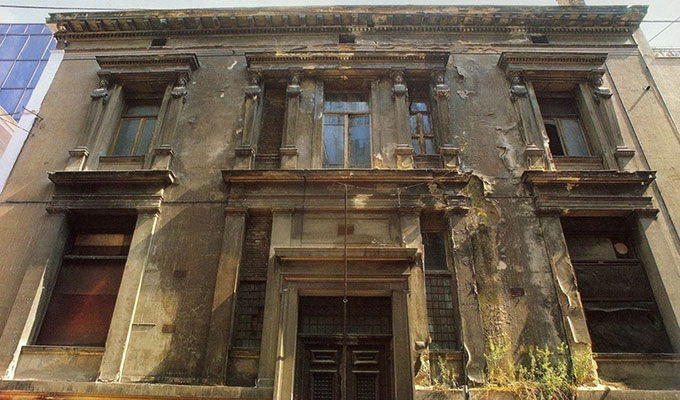

5. Kleanthis-Schaubert Residence
Also known as the Old University, the amazing building that now houses the Museum of History of the University of Athens on Tholos Street in Plaka was once the home of the architects Stamatis Kleanthis and Edward Schaubert. The two architects who built the first city plan of the newly formed capital of the Greek state restored the home "from the Ottoman ruins" in 1831 and stayed there until 1837. The previous history of the house is not known -the only thing we know is that the two bought the dilapidated building from the Turkish Sante Khanum, while the prevailing view regarding it’s date is the 17th century, perhaps even earlier. Kleanthis and Schaubert rented the house to the Greek government in 1837 to house the first Greek university, who worked there until 1842.
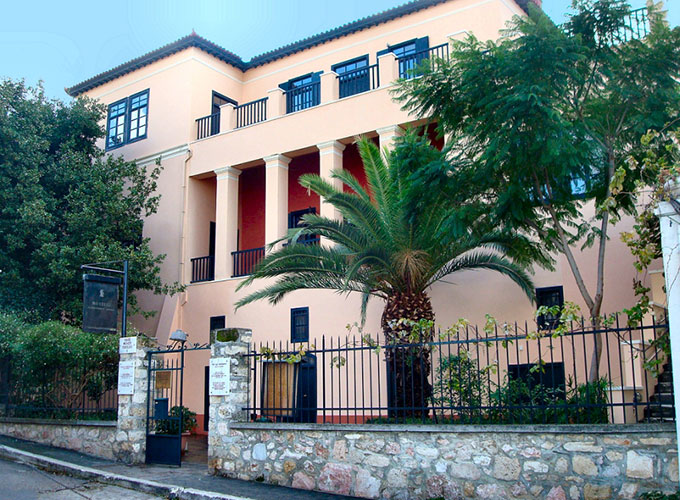

6. Kyriakoulis Mavromichalis Mansion
The beautiful three-storey neoclassical house on the corner of Amalia and Xenofontos now houses the offices of the European Parliament in Greece. It was built in 1870 with plans by Theofilos Hansen, architect of the Academy and the Library. It originally belonged to Kyriakoulis Mavromichalis, grandson of the eponymous hero of the Revolution and Prime Minister of Greece in 1909-1910. It housed the Russian Embassy in 1876-79 and it was here that the ambassador Savourof organized legendary balls, which exceeded luxury like no other in the city. The gossip of the time was that Savourof cost as much as all the Ambassadors together. The Russian Ambassador had four carriages and many horses and dogs in the garden of the Palace, which he donated to the Athenians when he left to take up his new duties in Berlin.
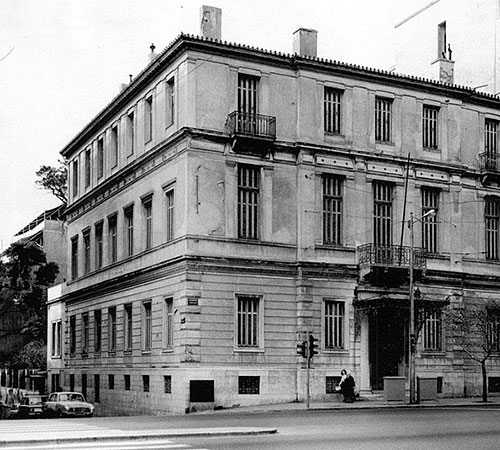

7. Anton Prokesch Von Osten Mansion
Located on Feidiou Street is the residence of the Austrian ambassador, which Hans Christian Andersen in 1841 describes as isolated at the edge of town overlooking the wide desert and high mountains. It was one of the first mansions that was built in Athens in the period 1836-1837. Later he housed the Greek Conservatory of Manolis Kalomiri. Today it belongs to the Ministry of Culture, abandoned and collapsing day by day.
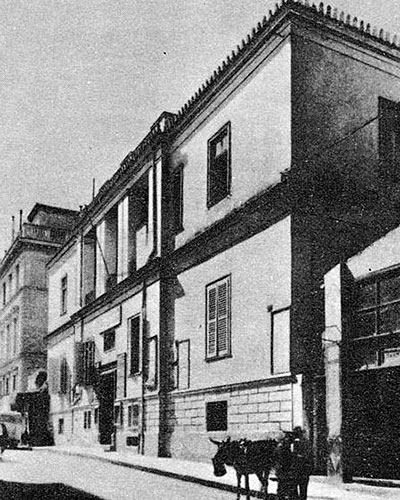

8. Ilision Mansion
The complex currently houses the Byzantine and Christian Museum (Sofias 22) and was designed by Stamatis Kleanthis. It was constructed in the period 1840-1848 out of the city near the banks of the river Ilissos. It was the residence of the aristocrat Sophia de Barmoua Lempren, also known as Duchess of Plakentias.
9. Stathatos Mansion
On the corner of Vasilissis Sofias and Herodotus, the current Museum of Cycladic Art is one of the finest buildings in the city. It was designed by Ernst Ziller and built in 1895 as a residence and headquarters of Ithaca’s shipowner and merchant carbon Otto Stathatos. It was donated by the descendants of the Greek government and subsequently housed the Bulgarian embassy, officers club of Britain (which they dictated in 1945), the Canadian embassy in 1970, and the embassy of Libya. In 1982 it was bought by the Public Real Estate Corporation and in 1991, it was donated to the Goulandris Foundation to house the new wing of the Museum of Cycladic Art.
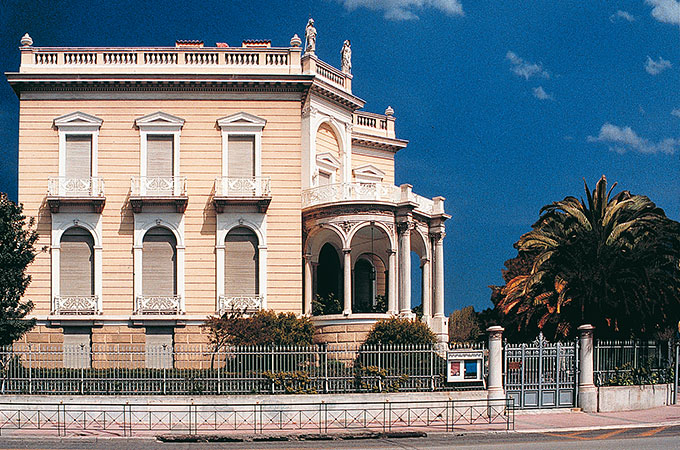

10. Dekozis-Vouros Residence
The beautiful building on Paparrigopoulou street now houses the Museum of the City of Athens and the café of the Black Duck. It was one of the first houses which was built in liberated Athens in 1833. It was designed by German architects G. Luders and J. Hoffer and it’s one of the first examples of austere classicism in Greece. The house belonged to Chian banker Stamatis Dekozis Vouros (1792-1881) and hosted Otto and Amalia from 1837 until 1843, expecting to complete their palaces -the current parliament.
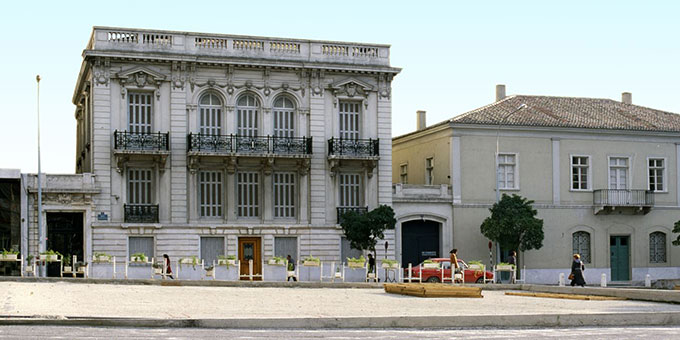
Originally posted in Greek on In2Life
Translated by Codico Lab

Originally posted in Greek on In2Life
Translated by Codico Lab
Published in
City Discovery
Tagged under
Friday, 06 November 2015 14:44
Lynn's Thanksgiving In Lesvos
I’ve decided to go back to Lesvos for American Thanksgiving because the reports coming from the island continue to be extremely disturbing. Several friends expressed interest in going with me so we’ve formed a group to go together. Yeehaw! Life is always better in teams.
Our plan is to help address some of the basic shortages, particularly with the fact winter is coming. We’re researching viable options including tent structures, emergency blankets, jackets, waterproofing, etc.
We’ll go with at least two vehicles and our supplies by ferry to arrive in Lesvos on November 25th. We’ll stay through the 29th. While there, we’ll probably spend most of our time either on the beaches or in the camps of Moria/Kara Tepe, depending on where we feel we can do the most good. This may change as the needs and situation changes.
My brother and his family made a donation that we’ll use to buy our initial shelter supplies. We aren’t formally fundraising as we aren’t a non-profit organization but we are giving people the opportunity to join in by sending us donations if they are so inclined. For those of you who didn’t know me before the current yoga instructor era, for many years before that I was a high tech and venture capital chief financial officer. So while we may not be the most qualified to take donations, we’re probably not the least qualified either. Our commitment is that 100% of any donations go directly to help the refugees. Please contact us directly if you’d like to donate.
We’ll be posting updates here as we kick the project off.
And for anyone reading, I’ll add that before I went to Lesvos for a weekend in September, I hadn’t actually done anything to help with the crisis. I point that out just to say if you haven’t done anything to help, don’t feel guilty. We are all a bit confused about how to get involved….
For me the evolution was: do nothing–> read the news/see the pictures of the crisis and start feeling kind of terrible–> walk around wondering if I can/should be doing something to help–> make some attempt to do something helpful (in my case go to Lesvos for a weekend, unsure if that was even going to be useful…)–> refine the effort and offer some more meaningful help. You are probably somewhere on that continuum…. And this might be your moment.
Published in
People
Tagged under
Tuesday, 03 November 2015 21:53
Greekscapes: Illustrated Journeys With An Artist
Her father did die tragically, as her instincts had warned her. Catapulted by her grief into a marriage with the wrong man, the author tried to ‘act normal’. The other wives seemed happy enough, so why wasn’t she? After twelve years of infertility tests and operations, the author’s depression was growing. Refusing drugs ‘to calm you down’, painting became her chosen method to free up her emotional stalemate.
Her persistence led to a brilliant painting mentor and then, by a twist of fate, she was on a flight to Greece asking herself, "What can I paint there?" She soon found the answer, and an epiphany in an olive grove gave her the perspective needed to change her life. But to leave everything, move to a foreign country and face colossal failure? It was tempting the Fates for a middle-aged woman on her own, with minimal resources, to believe she could turn her dream into reality - yet it was certainly worth a try.
Her persistence led to a brilliant painting mentor and then, by a twist of fate, she was on a flight to Greece asking herself, "What can I paint there?" She soon found the answer, and an epiphany in an olive grove gave her the perspective needed to change her life. But to leave everything, move to a foreign country and face colossal failure? It was tempting the Fates for a middle-aged woman on her own, with minimal resources, to believe she could turn her dream into reality - yet it was certainly worth a try.
Through her diaries, poems, memories and paintings, Pamela Rogers, as the well-known artist Erin Dertner wrote, “ has woven a story based on her own life that captivates, inspires, elevates and transforms. It is filled with snippets of glory amidst the trudging through life that all of us can relate to. You will find yourself laughing and crying along the journey, as if you're alongside her on this unique path. She is an artist in every sense of the word. She paints, she draws you in, she embellishes her daily life with color and you will be the better for the reading and having gotten to know her.”
To order a copy of the book:
Paperback:
http://www.amazon.co.uk/dp/1508860564/ref=cm_sw_r_fa_dp_E.Nmwb0VDWGMC
Kindle:
http://www.amazon.com/s/ref=
Born in Winston-Salem, North Carolina in 1948, Pamela Jane Rogers earned her Bachelor of Fine Arts Degree in Painting at the UNC- Greensboro. She later studied at the New York Art Student's League, the Vermont Studio School and with renowned NC artist Jaquelin Jenkins. In 1990 her artistic, philosophical and cultural interests inspired her move to Poros Island, where she continues her voyages with art. Her paintings are included in private and corporate collections world-wide, as well as the British Royal Collection.
To order a copy of the book:
Paperback:
http://www.amazon.co.uk/dp/1508860564/ref=cm_sw_r_fa_dp_E.Nmwb0VDWGMC
Kindle:
http://www.amazon.com/s/ref=
Born in Winston-Salem, North Carolina in 1948, Pamela Jane Rogers earned her Bachelor of Fine Arts Degree in Painting at the UNC- Greensboro. She later studied at the New York Art Student's League, the Vermont Studio School and with renowned NC artist Jaquelin Jenkins. In 1990 her artistic, philosophical and cultural interests inspired her move to Poros Island, where she continues her voyages with art. Her paintings are included in private and corporate collections world-wide, as well as the British Royal Collection.
After many requests by readers of her first novel, GREEKSCAPES Journeys with an Artist, this new version of GREEKSCAPES is a memoir and includes illustrations of her paintings.
More information on Pamela Jane Rogers, visit her website - http://pamelajanerogers.com
More information on Pamela Jane Rogers, visit her website - http://pamelajanerogers.com
Published in
Books
Tagged under
Thursday, 05 November 2015 07:00
Political Exile Museum In Athens
On discovering that there was a political exhile museum in Athens, Dave from Dave's Travel Pages immediately wanted to find out more.
Political exhiles? What was this all about? As he researched, Dave learned that there is a little known part of modern Greek history that even many Greeks do not know about. Keep reading...
Political exhiles? What was this all about? As he researched, Dave learned that there is a little known part of modern Greek history that even many Greeks do not know about. Keep reading...
Dave's ongoing project to visit all the museums in Athens has led him to some interesting places. Some have been essential to visit, like the National Archeological Museum. Others have been educational on a much deeper level, like the Tactual Museum of Athens. Some are shocking, such as the Political Exile Museum. Let's start with some context:
Modern Greece as we know it has existed for less than 200 years. During this period, it has endured Balkan War, two World Wars, civil war and a dictatorship. As one can imagine, whoever was in charge at the time used a variety of methods to keep in power. One of these was by internal political exile to the Greek islands.
From 1926 to 1967, many of the Greek islands were used to house political prisoners. They would generally be people that had opposing political views to those in power. They might include politicians, military figures, and activists, but also poets and artists. The most significant numbers of people exiled, occurred during and directly after the civil war period of 1946 to 1949.
There is a strange absence of information available to the public about the civil war period. Certainly, there is no specific museum dedicated to this. So, when I discovered that there was not one, but two political exile museums in Athens, I knew I had to visit. The museums are actually next door to each other at 31, Agion Asomaton Street 10553 Keramikos, Athens. They have really short opening hours, which are between 11.00 and 14.30 so it might be worth calling ahead to make sure they are open.
To read more, please visit: Dave's Travel Pages
Published in
City Discovery
Tagged under
Thursday, 05 November 2015 07:00
'Travel Bloggers Greece' Attends TBEX Asia 2015. Next Stop; WTM London
Travel Bloggers Greece (TBG) participated in the first Travel Bloggers Exchange (TBEX) Asia 2015 in Bangkok, Thailand held October 15-17, almost a year after the TBEX Europe 2014 event was held in Athens.
The first Greece-based travel blogger network joined over 600 travel bloggers and online writers worldwide from 50 countries to exchange knowledge and ideas, and learned about Thailand — discovering Thainess.
“TBG’s members are committed to improving their blogs and helping to promote a positive image of Greece”, said Elena Sergeeva, co-founder of TBG and publisher of travel blogs Passion for Greece and PassionforHospitality.
“Events such as TBEX are a great opportunity to gain new insights on the latest travel blogging trends, learn new practices and to connect with professionals from around the world.”
The first Greece-based travel blogger network joined over 600 travel bloggers and online writers worldwide from 50 countries to exchange knowledge and ideas, and learned about Thailand — discovering Thainess.
“TBG’s members are committed to improving their blogs and helping to promote a positive image of Greece”, said Elena Sergeeva, co-founder of TBG and publisher of travel blogs Passion for Greece and PassionforHospitality.
“Events such as TBEX are a great opportunity to gain new insights on the latest travel blogging trends, learn new practices and to connect with professionals from around the world.”
To read more, please visit: Greek Travel Pages
Published in
Greece In The News
Tagged under

